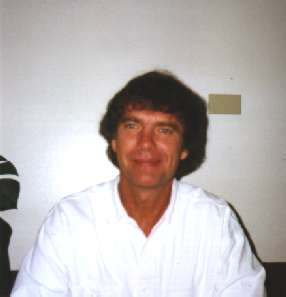
Office: 259 Interdisciplinary Sciences
Stanford Woosley's research centers on theoretical high-energy astrophysics, especially violent explosive events such as supernovae and gamma-ray bursts. He and his group, which typically includes two postdoctoral researchers and two graduate students, are especially interested in the nucleosynthesis, hydrodynamics, and radiation transport in these events, and in the evolution of massive stars, which sets the stage for such explosions. Detailed models are evolved on the computer.
Woosley is also co-investigator on the High Energy Transient Experiment II --a satellite dedicated to the study of gamma-ray bursts, scheduled by NASA for (re)launch in 1999--and is involved in planning NASA's other missions for gamma-ray astronomy in the next century.
His current research projects include modeling the evolution of massive stars (8 to 50 times the mass of the sun) through all stages of nuclear burning, in an attempt to obtain realistic presupernova stars and a complete depiction of nucleosynthesis for all isotopes lighter than krypton. An example of this sort of work can be found in ApJS, 101, 181, (1995) with application to Galactic chemical evolution discussed in ApJS, 98, 617 (1995). Currently, these calculations are being repeated with improvements in the nuclear physics, a more realistic treatment of convection, new opacities, mass loss, and rotation. Much of the work on the nuclear aspects of nuclear astrophysics is being done in collaboration with Rob Hoffman (LLNL). A major project is also under way with Alex Heger (MPA - coming to UCSC as a postdoc in winter, 1998) - and Norbert Langer (Potsdam) to model the effects of rotation on the evolution of massive stars all the way to the presupernova state.
Woosley's group is also actively enganged in the development of multi-dimensional codes, both 2D and 3D, for the study of hydrodynamics and radiation transport in supernovae and gamma-ray bursts. Grad student Andrew MacFadyen is working in 2D calculations of the "collapsar" model for gamma-ray bursts. Postdoc Chris Fryer is working on 3D models for the Type II supernova explosion mechanism as well as several models for gamma-ray bursts involving e.g., merging black holes and white dwarfs and meging helium stars and black holes. Radiation transport, especially the spectroscopic evolution of supernovae is calculated by co-investigator Ron Eastman at LLNL. Eastman is also an Adjunct Associate Professor at UCSC. Eastman and Woosley have recently received funding from the Advanced Supercomputer Initiative (ASCI) to develop massively parallel codes for the modeling of radiation transport coupled to hydrodynamics in 3D. These codes will initially be applied to the study of supernovae.
Finally Woosley is working with colleagues at LLNL, Sandia, the University of Chicago, and the University of Barcelona to understand better the propagation of nuclear flames in those exploding white dwarf stars that make Type Ia supernovae.
Beginning in summer 1998, Woosley (again) became Chairman of the Astronomy and Astrophyics Department.
Woosley's Curriculum Vitae (184k; HTML format )